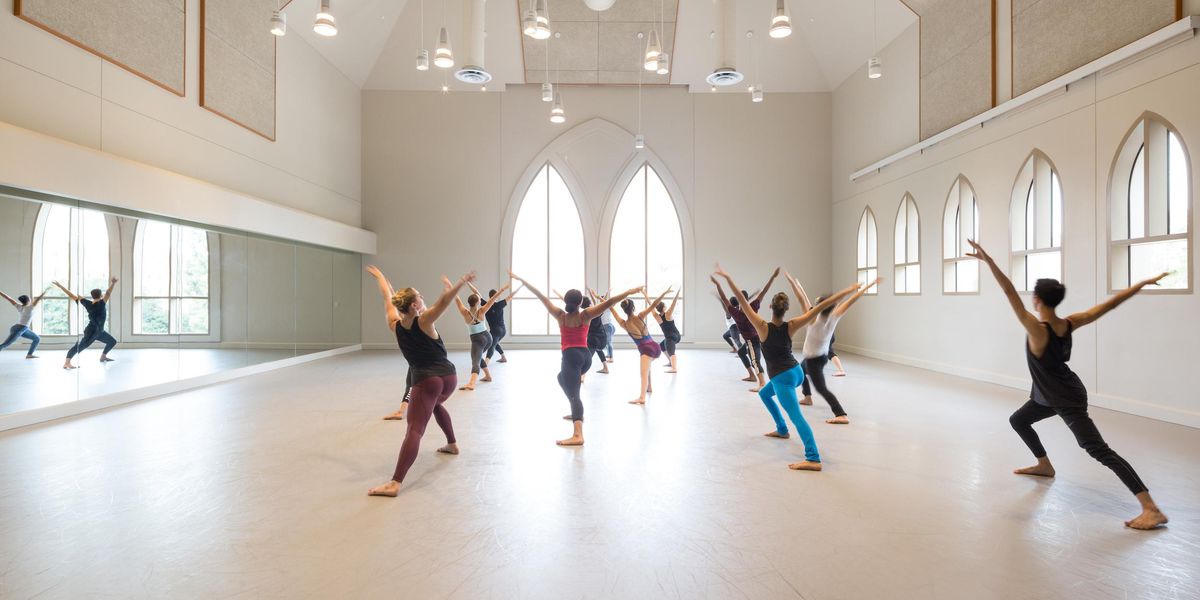2014 Summer Study Guide: Becoming a Petit Rat
Former
Paris Opéra Ballet soloist Muriel Hallé instructs summer intensive students. Photo by Christophe Devera, Courtesy POB School.
“We’re in class—not on stage,” Elisabeth Platel warns a group of uniform-clad students at the Paris Opéra Ballet School. It’s not often you’ll hear this sentence in a dance studio, but for the POB School director, the goal is no-frills academic perfection. When one girl pushes to complete three turns and stumbles, Platel claps her hands to stop the pianist. “I want quality. Can you be active in two pirouettes, with a higher leg in passé? Do it with less force, but with precision.” The student blushes, but her next attempt is both cleaner and more technically sound.
Quality is akin to a mantra at the Paris Opéra Ballet School, an institution that remains notoriously insular with very few foreign students admitted to the year-round program. But for the first time in 2013, students from around the world were able to experience it first-hand. During the school’s first summer intensive, 210 dancers ages 10 to 18 were invited to live the life of the petits rats, as the French students are nicknamed, for ten days on the premises of the school, in Nanterre, suburban Paris.
The intensive was Platel’s brainchild. A frequent judge at international competitions, the former Paris Opéra Ballet star was frustrated to be the only director unable to offer prizes and scholarships to promising contestants because of the school’s strictly regulated application process. “I’m technically outside my remit,” she says. “The mission of the POB School is to train dancers for the Paris Opéra, but I wanted to give others a chance to experience what we have here.”
To do so, she had to convince both the Paris Opéra Ballet and her faculty that it was worth the extra work involved. The 300th anniversary of the French school of dance in 2013 proved to be the opportunity. The intensive is staffed entirely with POB School pianists and teachers, who all deliver their instructions in English; former étoiles Wilfried Romoli, Carole Arbo and Fanny Gaïda taught alongside Platel, and repertoire includes works from the company and school like variations from Nureyev’s version of Swan Lake. (A separate summer program for teachers runs simultaneously.)
All students take technique daily, as well as three other classes that reflect the school’s year-round syllabus. Older students are offered partnering, repertoire, jazz and contemporary classes; the youngest learn character, baroque dance, mime and musical expression. Applicants can choose to board in the school’s own dormitories (130 places are available) or stay elsewhere. Thirty-eight percent of students came from France the first year, but only three were full-time POB students.
“Everything is very organized, from tendus to the timing for dinner,” says 16-year-old Alexandros Pappajohn, who studies full-time at the School of American Ballet. For him, the intensive was a chance to fulfill his lifelong dream to study at the POB School. “I’ve always wanted to go there, but my parents wouldn’t let me travel abroad at such a young age for training.”
One of 25 students in the most advanced level, Katherine Higgins also jumped at the chance to experience a new training philosophy when Platel offered her a scholarship at the Youth America Grand Prix. “The French style is very different,” says Higgins, a recent graduate of the Royal Ballet School of Antwerp. “There’s a unique intention and meaning behind the movements. The preparations, the arms are not what I’m used to, and there are even steps I’ve never done before.”
The intensive’s selling point is its strict adherence to the restrained French style and the hands-on approach to corrections—a cultural trait that takes some adjusting to. And because the focus is on building strong foundations, the classes introduce advanced technique more slowly than is customary in the U.S. “I see a generation who prefers to be in a harder class to challenge themselves, but we’re not looking for children who can do extraordinarily difficult variations,” says Platel. “Instead, we work on coordination, on presenting the foot, on typically French footwork and pointe work. We’re 300 years old—French dance has gone through an aging process, and it ages well, like good wine.”
Higgins and Pappajohn say they felt the benefits. “I’ve been challenged to get my legs and feet together,” says Pappajohn, “and it’s made me much stronger already.” For Higgins, the highlight was working with Platel, a former étoile. “Everything she says opens my eyes more.”
Platel warns that summer intensive students shouldn’t see the program as an opportunity to audition: According to strict POB School policies, she cannot offer year-round places on the basis of the program. Still, as the students file out onto the large spiraling staircase and take their canteen lunch out to the school’s park, they look every inch the petit rat. And their presence is a new door to the world of the French school. “I feel like I know a new way to work,” says Higgins. “I can take that with me wherever I go.” And she has—this past summer, Higgins was invited to join the Bolshoi.
A frequent
Dance Magazine contributor, Laura Cappelle writes about dance in Paris, France.




